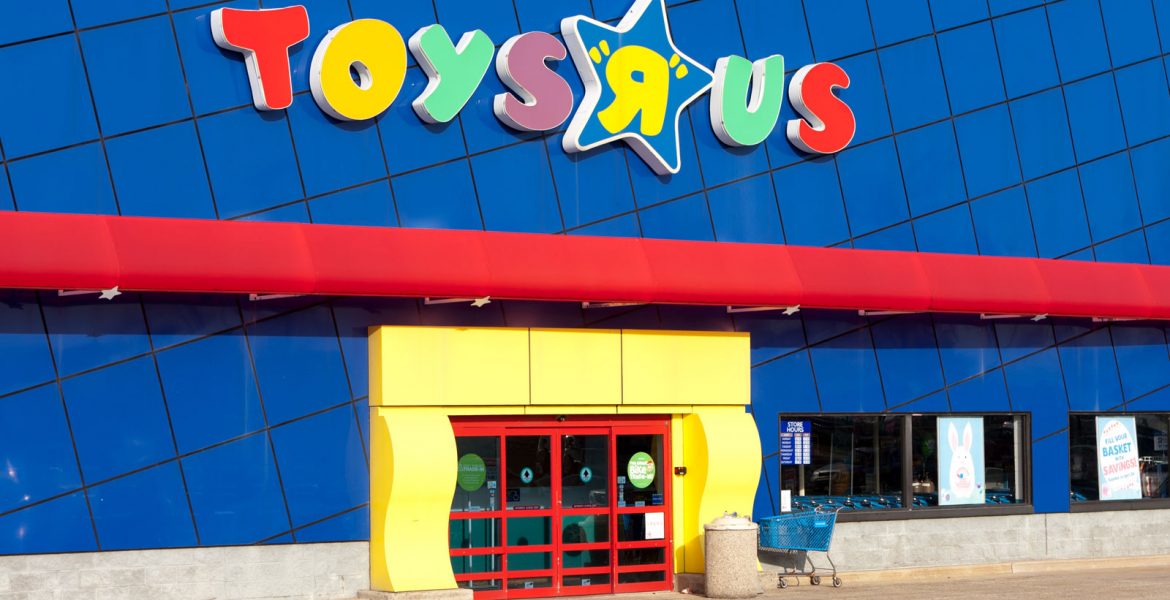In a surprising move, Toys “R” Us, pulled out of its bankruptcy auction and announced that it’s taking steps towards reinventing itself, banking on the value of its intellectual property and the strength and credibility of its brand. Determined to keep the beloved brand out of the retail graveyard, its controlling lenders announced that they’re reimagining Toys “R” Us as a “branding company,” which will license some of its products globally and explore opportunities to create new retail models with partners.
However, the viability of this strategy is questionable. While the owners decided to hang on to what they perceived to be the brand’s most valuable assets, the company is still in bankruptcy. While The Toys “R” Us brand is a strong platform from which to start the company’s metamorphosis, it will need more than a halo of brand awareness and nostalgia to stage its re-invention.
Toys “R” Us’ exit left an estimated $11 billion hole in the toy industry and hundreds of toy makers and consumers hanging – without a major brick and mortar chain dedicated entirely to toys. But it’s unclear if the brand can be restored to its former glory and its role as the hit-maker of the toy industry. Learning from the experience of brands like Brookstone, Radio Shack, American Apparel and others, when retail brands are rescued from bankruptcy and then resuscitated, they rarely appear anything like what they previously were.
The tale of Toys “R” Us’ death spiral is more than the saga of a retailer that was put out of business by Amazon and other mass retailers. The story of Toys “R” Us’ decline is marked with evidence of large discrepancies in how the company laid off 30,000+ store employees without severance, while it treated its executives in a far more compassionate manner. The story also reveals how private equity investors like Bain and KKR unfairly stripped profits out of the business while leaving employees with nothing. Policymakers even got involved when former employees went to Congress to lobby for more government oversight of retail investment deals. That’s a lot of baggage for a brand hoping to rouse its inner Phoenix from the ashes.
No matter what form a revived Toys “R” Us might take, the company is relying heavily on the Toys “R” Us brand assets to contribute to the success of a new business model. But Toys “R” Us will need a lot more than nostalgia to ensure its success. The company will need a new 21st century strategy that’s relevant and meaningful to consumers that leverages the strength of brand awareness but makes up for the misgivings of their former business strategies to survive.
Many brands can endure a crisis of this magnitude when they do the right kind of repair work. Toys “R” Us can attempt to win back the favor of the employees it wronged by first taking responsibility for the part it played in the seedy business and financial practices that contributed to the company’s tragic downfall. The company could start by contributing in whatever legally and financially feasible way it can to efforts that Bain and KKR have established for providing financial aid to displaced workers. While financial compensation alone can’t adequately repair broken relationships with employees, it will go a long way towards instilling confidence among consumers that Toys “R” Us holds itself accountable and actually has a heart.
As soon as is humanly – and legally – possible, the company should announce a plan and a detailed roadmap for its reinvention. While it works its strategy, the company can earn confidence from the public by communicating when it sets goals and achieves important milestones. But to truly re-ignite the brand, Toys “R” Us must carve out a unique and relevant role in the industry by licensing the brand name to products overseas and creating a “store within a store” retail model. However they decide to move forward though, they must create a business model that clearly differentiates it from the mass retailers that stepped in last year to fill the void created by the company’s disappearance.
Bottom line, Toys “R” Us needs more than its brand equity to stage a successful comeback. No matter what strategy the company takes Toys “R” Us will probably never be able to compete with Amazon, Walmart and Target on volume sales. But the brand can leverage what originally made it great: decades of experience, data about toy shopping and a track record in creating the breakthrough hits that only come about when it took a chance on upstart products retailers wouldn’t have had the courage or know-how to touch.

